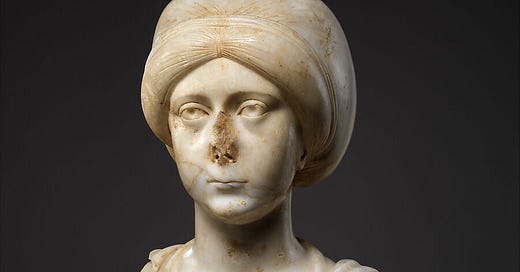The skeleton of the Byzantine Empire
Review of A Short History of Byzantium by John Julius Norwich
Many of us think of the Dark Ages beginning with the fall of Rome to the Goths, with the breakdown of just about everything. However, this was far from the case: not only did the "Roman Empire" continue in the East (without Rome), but there was a flourishing civilization of great learning, phenomenal wealth, and imperial continuity. Indeed, Theodoric - the Goth conqueror of Rome - was sworn under the suzerainty of the Byzantine Emperor, and had grown up in Constantinople; he was not the savage head of a "barbarian horde." That we are not taught these things is a Western bias against the Eastern tradition. Indeed, given the troubles of the Western Empire, Byzantium was perfectly placed, i.e. where it was happening, both as a trade crossroads, but also in a more defensible position from invasion - the West was becoming obsolete.
In addition, it was in Byzantium that the Roman Empire truly operated as a Christian one. According to the standard textbook, the papacy was always supreme regarding doctrinal issues and the Greek Orthodox Church represented an obscure backwater. This was not the case. For over 1000 years, the Eastern and Western branches of Christianity engaged in turbidly esoteric theological disputes that impacted the course of both Christendom and sometimes dictated who would obtain and maintain their power. (It was over questions such as whether Christ was divine exclusively or also partly human, the limits of iconoclasm, and debates that were perhaps equally as important as geo-political questions when it came to military and diplomatic force.) For a time in the early Middle Ages, with the power of the Greek Church, the Papacy was viewed as a vassal of Byzantine patriarchs. This is ably covered in the book and was a revelation to me.
Finally, Byzantium also functioned as a bulwark against the Islamic empires, slowing them down enough for Western Europe to re-emerge during the Renaissance as the dominant power, once the center of world trade moved to the Atlantic and the infusion of new ideas (largely from imported Byzantine sources) led to new syntheses of knowledge (i.e. the scientific method) and eventually superior technologies. Moreover, it was Venice that led the 4th Crusade against Byzantium (1202-4), leading to its sack and destruction, from which it never recovered.
As a dense and well written tour of nearly 1200 years of history, this book is simply too short to cover any of these topics in a comprehensive way. While it adds much flavor in lively descriptions, I continually felt myself wishing that I had bought Norwich’s 3-volume set, from which this is condensed. For example, there were intrigues in power politics that resembled the Western Roman Empire, but the Byzantine patriarchate and popular opinion created significant differences in the transfer of kingly power. This reading made me very hungry to learn more, a sign of the book's success, even though it did not make me feel any love for Byzantium. Indeed, much of the book is about a gradual decline, first ceding territory to Christian enemies and later to the Umayyads, Abbasids, and then the Ottoman Turks – the Byzantines were forever attempting to ward off disaster or reconquer what they lost, including Rome. Perhaps they did a good job in that the Eastern Empire survived extraordinary dangers and occasionally catastrophically incompetent emperors for so long. Nonetheless, it is a defensive rather than a dynamic tale, with few exceptions such as that of Justinian or the Basils.
Related reviews:
Splendidly dense introduction
This is an absolutely excellent series of essays on the premier western medieval empire, Byzantium, also called Eastern Rome. The writer expertly sketches the history, indicating what is important and what it meant, both in belief and of historical impact. What makes this book demanding and a great pleasure is that she respects the readers' intelligen…
How Byzantine texts influenced us
This is an excellent popular history about the impact of Byzantine culture on Renaissance Italy, the Arabs during their Baghdad apogee, and the Slavic world as it was differentiating into nationalities. While it is best to have a good grasp of these four periods of history, in particular Byzantium's, the author offers good skeletal explanations of vast …
A masterpiece of popular history and a meditation on imperial ambition
This is a highly readable, informative, and exciting history of the battle for the Mediterranean, between a succession of Christian and Moslem empires. If you want to know about the origins of Islam, the eclectic culture of southern Spain, the Crusades, or the rise and containment of the Ottoman Empire, this is the ideal place to start.






